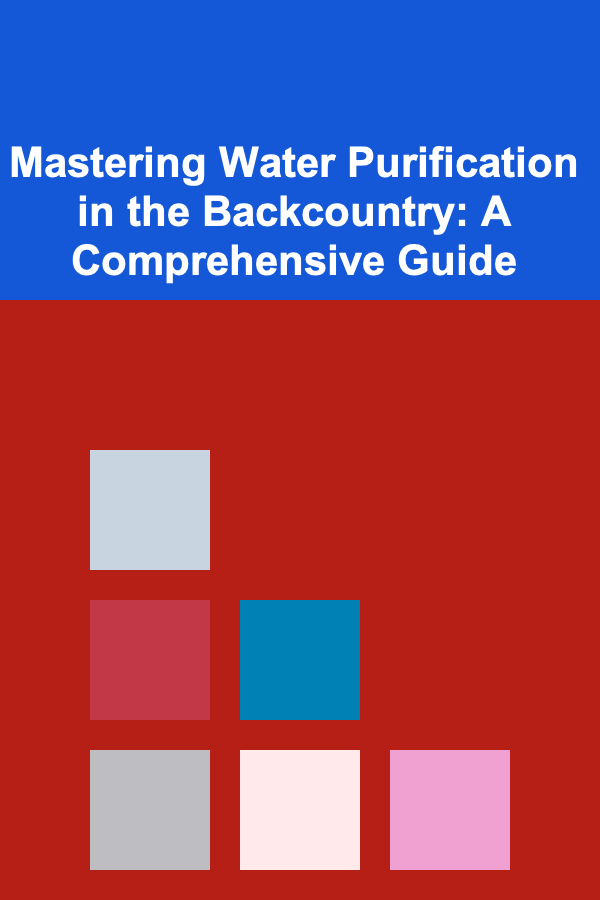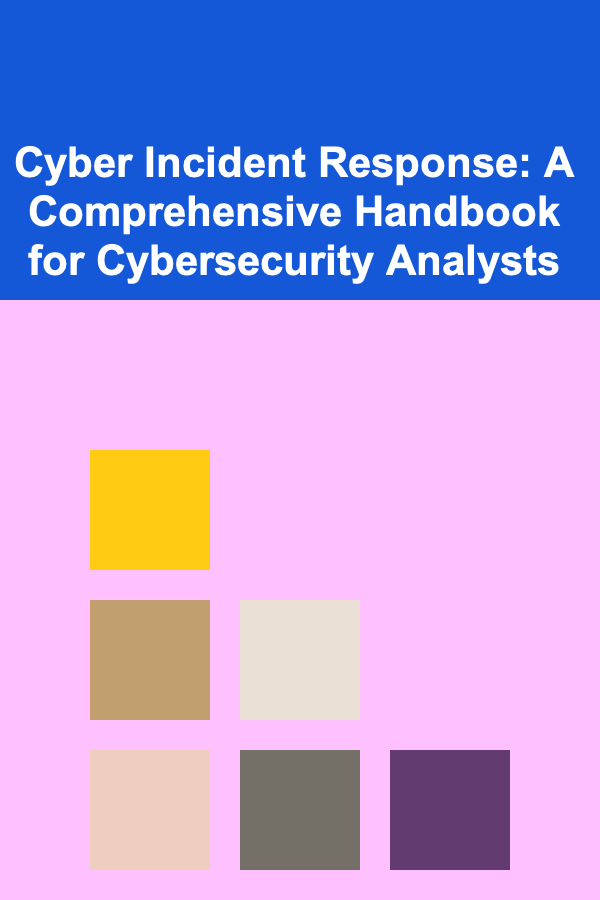
Mastering Water Purification in the Backcountry: A Comprehensive Guide
ebook include PDF & Audio bundle (Micro Guide)
$12.99$10.99
Limited Time Offer! Order within the next:

Access to safe drinking water is paramount for survival and enjoyment during any backcountry adventure. While the wilderness offers unparalleled beauty and solitude, it also presents potential hazards, including contaminated water sources. Drinking untreated water can lead to a range of illnesses, from mild discomfort to severe, life-threatening conditions. Therefore, understanding and implementing effective water purification techniques is crucial for responsible and safe backcountry travel. This comprehensive guide delves into the nuances of water purification, providing the knowledge and skills necessary to confidently secure safe drinking water in any wilderness setting.
Understanding the Risks: Water Contamination in the Backcountry
Water sources in the backcountry are susceptible to various contaminants, both naturally occurring and introduced by human or animal activity. Understanding these potential threats is the first step in mitigating them effectively.
Types of Contaminants:
- Biological Pathogens: These are the most common and immediate threat. Bacteria (e.g., E. coli , Salmonella ), protozoa (e.g., Giardia lamblia , Cryptosporidium ), and viruses (e.g., Norovirus, Hepatitis A) are microscopic organisms that can cause gastrointestinal illnesses. Animal feces, human waste, and decaying organic matter are primary sources of these pathogens. Giardia is particularly prevalent in North American waters, while viruses are generally less common but can still pose a risk.
- Sediment and Turbidity: Suspended particles like silt, clay, and organic matter can make water cloudy and unpalatable. High turbidity can also shield pathogens from purification methods like UV light and chemical treatments. Clear-looking water does not automatically equate to safe water.
- Chemical Contaminants: While less common in remote areas, chemical pollutants can still be present. These include pesticides, herbicides, heavy metals (e.g., lead, mercury), and industrial runoff. Natural sources of chemical contamination can include arsenic and other naturally occurring elements that leach into water sources from surrounding geology. Mining operations, even abandoned ones, can be a significant source of heavy metal contamination.
- Taste and Odor: Algae, decaying vegetation, and minerals can impart unpleasant tastes and odors to water, even if it's otherwise safe. While these issues don't necessarily pose a health risk, they can significantly impact palatability and hydration.
Factors Influencing Contamination:
- Proximity to Human and Animal Activity: Water sources near campsites, trails, and grazing areas are more likely to be contaminated with fecal matter.
- Altitude and Topography: Higher altitude streams may be less contaminated, but snowmelt runoff can carry pathogens and sediments. Slow-moving water in low-lying areas tends to accumulate contaminants more readily.
- Weather Conditions: Heavy rainfall and flooding can increase runoff, carrying pollutants into water sources. Drought conditions can concentrate contaminants in smaller water bodies.
- Time of Year: Water quality can vary seasonally. Spring runoff often carries a higher load of sediment and pathogens. Warm temperatures can promote the growth of algae and bacteria.
Important Note: Visual assessment of water is not a reliable indicator of safety. Even seemingly clear water can harbor dangerous pathogens. Always purify water from backcountry sources, regardless of its appearance.
Water Purification Methods: A Detailed Examination
Several methods are available for purifying water in the backcountry, each with its own advantages and disadvantages. The best choice depends on factors such as water source, group size, weight considerations, and personal preference.
1. Boiling: The Gold Standard
Boiling is the most reliable method for killing virtually all bacteria, protozoa, and viruses. It's effective, requires no specialized equipment beyond a cooking pot and heat source, and leaves no residual chemicals in the water.
How to Boil Water:
- Collect Water: Find a clear water source if possible. If the water is turbid, pre-filter it through a cloth or bandana to remove sediment.
- Boil Vigorously: Bring the water to a rolling boil for at least 1 minute at sea level. At higher altitudes (above 6,500 feet), increase the boiling time to 3 minutes to ensure complete disinfection due to the lower boiling point of water. A rolling boil is defined as bubbles that rise rapidly and continuously to the surface, even when the water is stirred.
- Cool and Store: Allow the water to cool before drinking. Store it in a clean container to prevent recontamination.
Advantages:
- Highly effective against all types of pathogens.
- Requires no special equipment (assuming you have a cooking pot and stove).
- Leaves no chemical residue.
- Can improve the taste of some water by removing volatile organic compounds.
Disadvantages:
- Requires a heat source and fuel, adding weight and bulk to your pack.
- Can be time-consuming, especially for large groups.
- Does not remove sediment or chemicals.
- Can alter the taste of the water slightly.
2. Chemical Treatment: Iodine and Chlorine Dioxide
Chemical treatments are a lightweight and convenient option for purifying water, but they are not as effective as boiling against all pathogens. Iodine and chlorine dioxide are the most commonly used chemicals.
Iodine:
Iodine effectively kills most bacteria and viruses but is less effective against Cryptosporidium and Giardia. It's available in tablet or liquid form.
How to Use Iodine:
- Collect Water: As with boiling, pre-filter turbid water.
- Add Iodine: Follow the manufacturer's instructions for dosage. Typically, this is one tablet or a specific number of drops per liter or quart of water.
- Wait: Allow the treated water to stand for at least 30 minutes before drinking. In cold water (below 68°F or 20°C), increase the contact time to 60 minutes, as iodine's effectiveness is reduced at lower temperatures.
Advantages:
- Lightweight and easy to carry.
- Relatively inexpensive.
- Effective against most bacteria and viruses.
Disadvantages:
- Less effective against Cryptosporidium and Giardia.
- Can impart an unpleasant taste to the water.
- Should not be used by pregnant women, people with thyroid problems, or those allergic to iodine.
- Effectiveness is reduced in cold water and turbid water.
Chlorine Dioxide:
Chlorine dioxide is more effective than iodine against Cryptosporidium and Giardia, making it a preferred choice for many backcountry travelers. It's also available in tablet or liquid form and generally has a better taste than iodine.
How to Use Chlorine Dioxide:
- Collect Water: Pre-filter turbid water.
- Add Chlorine Dioxide: Follow the manufacturer's instructions for dosage, which typically involves adding a tablet or drops to the water and waiting a specified time.
- Wait: Allow the treated water to stand for the recommended contact time, which can vary depending on the product. This is typically 30-60 minutes.
Advantages:
- More effective against Cryptosporidium and Giardia than iodine.
- Better taste than iodine.
- Lightweight and easy to carry.
Disadvantages:
- May be slightly more expensive than iodine.
- Contact time may be longer than iodine.
- Still not effective against all pathogens in highly contaminated water.
Taste Improvement: To improve the taste of chemically treated water, consider adding a flavor enhancer such as drink mix or electrolyte tablets after the contact time is complete. Letting the treated water sit open to the air for a few minutes can also help dissipate some of the chemical taste.
3. Water Filters: Mechanical Removal of Pathogens
Water filters use physical barriers to remove pathogens and sediment from water. They are available in a variety of designs, including pump filters, gravity filters, and straw filters.
Types of Water Filters:
- Pump Filters: These filters require manual pumping to force water through the filter element. They are generally effective and can filter large volumes of water quickly.
- Gravity Filters: Gravity filters use gravity to pull water through the filter element. They are convenient for filtering large quantities of water at campsites and require minimal effort.
- Straw Filters: Straw filters are small, lightweight filters that allow you to drink directly from a water source. They are ideal for solo hikers and emergencies.
- Bottle Filters: These are water bottles with a filter integrated into the straw or bottle body. Good for on-the-go filtration.
Filter Pore Size and Effectiveness:
The effectiveness of a water filter depends on its pore size. Filters with smaller pores can remove a wider range of pathogens. Here's a general guideline:
- 0.2 micron filters: Effective at removing bacteria and protozoa. Many filters claim this size.
- 0.1 micron filters: Provide slightly better protection against smaller bacteria.
- Filters that claim virus removal: These usually have a specialized filter element (often using adsorption) or a separate chemical treatment step in addition to the physical filter. Check the specifications carefully. Many filters reduce virus counts but do not eliminate them entirely.
How to Use a Water Filter:
- Choose a Filter: Select a filter appropriate for your needs, considering factors such as pore size, flow rate, and weight.
- Collect Water: Use a pre-filter (often included with the filter) to remove sediment and prolong the life of the filter cartridge.
- Filter Water: Follow the manufacturer's instructions for operating the filter. For pump filters, pump the water through the filter. For gravity filters, hang the dirty water reservoir above the clean water reservoir and let gravity do the work. For straw filters, drink directly from the water source.
- Maintain the Filter: Clean the filter regularly according to the manufacturer's instructions. Backflushing is often necessary to remove debris and maintain flow rate. Replace the filter cartridge when it becomes clogged or reaches the end of its lifespan.
Advantages:
- Removes bacteria, protozoa, and sediment.
- Can filter large volumes of water quickly.
- No unpleasant taste.
Disadvantages:
- Does not kill viruses (unless the filter specifically states that it does and has been certified to do so). This is a critical point.
- Requires maintenance and replacement of filter cartridges.
- Can be bulky and heavy.
- Can be expensive.
- Can be damaged by freezing.
- Flow rate decreases as the filter clogs.
4. Ultraviolet (UV) Light: Disrupting DNA
UV light purifiers use ultraviolet light to disrupt the DNA of microorganisms, rendering them unable to reproduce and cause illness. They are effective against bacteria, viruses, and protozoa, but only in clear water.
How to Use a UV Purifier:
- Collect Clear Water: UV light is only effective in clear water. Pre-filter turbid water thoroughly. If you can see particles in the water, UV light will not reliably disinfect it.
- Activate the Device: Follow the manufacturer's instructions for activating the UV purifier.
- Treat Water: Immerse the UV light in the water for the recommended time, typically 60-90 seconds per liter or quart. Stir the water while treating it to ensure that all parts of the water are exposed to the UV light.
Advantages:
- Effective against bacteria, viruses, and protozoa.
- No unpleasant taste.
- Lightweight and portable.
Disadvantages:
- Only effective in clear water.
- Requires batteries.
- Can be expensive.
- Bulky compared to chemical treatments.
- Can be damaged easily.
Choosing the Right Purification Method: Factors to Consider
Selecting the appropriate water purification method depends on a variety of factors:
- Water Source Quality: If the water source is visibly turbid, a filter or pre-filtration is essential. For sources known to be contaminated with viruses (e.g., near heavily used campsites), boiling or a filter certified to remove viruses is recommended.
- Group Size: For large groups, boiling or gravity filters may be more efficient. Individual hikers may prefer lightweight chemical treatments or straw filters.
- Trip Duration: For longer trips, consider the weight and fuel requirements of boiling versus the lifespan of a filter cartridge or the supply of chemical treatments.
- Weight and Bulk: Backpackers often prioritize lightweight and compact options. Chemical treatments and straw filters are the lightest choices.
- Cost: The initial cost of equipment and the ongoing cost of replacement cartridges or chemicals should be considered.
- Personal Preference: Some people are sensitive to the taste of chemically treated water and may prefer filtration or boiling.
- Altitude: Remember that boiling times need to be increased at higher altitudes.
- Temperature: Chemical treatments are less effective in cold water.
Best Practices for Water Collection and Storage
Proper water collection and storage techniques are essential for preventing recontamination after purification.
Collection:
- Choose the Best Source: Opt for clear, flowing water whenever possible. Avoid stagnant pools, areas with visible algae blooms, or water sources near animal droppings or human waste. Springs are often a good source of relatively clean water.
- Collect Water Upstream: When collecting water from a stream, collect it upstream from campsites, trails, and areas where animals may be present.
- Use a Clean Container: Use a dedicated water collection container that is clean and free of contaminants.
- Avoid Stirring Up Sediment: When collecting water from a lake or pond, avoid stirring up sediment from the bottom.
Storage:
- Use a Dedicated Water Bottle or Reservoir: Do not use the same container for storing dirty water and clean water.
- Keep the Container Clean: Rinse the water bottle or reservoir regularly with clean, purified water.
- Protect from Contamination: Store water in a clean, protected location to prevent recontamination.
- Avoid Prolonged Storage: Drink purified water as soon as possible. While properly purified water can be stored for a few days, it's best to consume it quickly.
Emergency Water Sources and Techniques
In some situations, finding a readily available water source may be challenging. Knowing how to locate and collect emergency water sources can be crucial for survival.
- Rainwater Collection: Collect rainwater using a tarp or other waterproof material. Ensure the collection surface is clean.
- Snowmelt: Melt snow using a stove or fire. Remember that snow requires significantly more fuel to melt than liquid water to boil. Never eat snow directly, as it can lower your body temperature.
- Morning Dew: Collect dew from plants using a cloth or sponge.
- Plant Transpiration: Place a clear plastic bag over a leafy branch to collect water through transpiration. Seal the bag tightly and leave it in the sun.
- Locating Springs: Look for areas with lush vegetation or damp soil, which may indicate the presence of a spring.
Important Safety Note: While these emergency techniques can provide water in desperate situations, always prioritize purifying the water before drinking it.
Beyond Purification: Hydration Strategies
Water purification is only one aspect of maintaining proper hydration in the backcountry. Developing effective hydration strategies is equally important.
- Drink Regularly: Don't wait until you're thirsty to drink. Drink small amounts of water frequently throughout the day.
- Hydrate Before, During, and After Activity: Start hydrating before you begin your hike or activity. Continue hydrating during and after exercise to replenish fluids lost through sweat.
- Electrolyte Replacement: During strenuous activity, replace electrolytes lost through sweat by consuming electrolyte drinks or tablets.
- Monitor Urine Color: Clear or light-colored urine is a good indication of adequate hydration. Dark urine indicates dehydration.
- Be Aware of Environmental Factors: Hot weather, high altitude, and strenuous activity can increase your fluid requirements.
- Avoid Excessive Consumption of Alcohol and Caffeine: Alcohol and caffeine are diuretics and can contribute to dehydration.
- Carry Enough Water: Plan your water needs based on the duration and intensity of your activity, as well as the availability of water sources along your route.
Conclusion: Confidence in the Backcountry
Mastering water purification in the backcountry is a fundamental skill for responsible and safe wilderness travel. By understanding the risks of water contamination, learning various purification methods, and implementing best practices for water collection and storage, you can confidently secure safe drinking water in any environment. Remember to choose the purification method that best suits your needs and always prioritize safety. With the knowledge and skills presented in this guide, you can embark on your backcountry adventures with the peace of mind that comes from knowing you can reliably access one of life's most essential resources: clean, safe drinking water.
Reading More From Our Other Websites
- [Home Party Planning 101] How to Create an Elegant Home Party Ideas Menu: A Step-by-Step Guide for Sophisticated Hosts
- [Biking 101] Bike Trailer vs. Bike Basket: Which Is Right for You?
- [Home Maintenance 101] How to Perform Seasonal Maintenance on Your Appliances
- [Home Budget Decorating 101] How to Decorate with Natural Elements to Create a Calming and Budget-Friendly Home
- [Screen Printing Tip 101] Creative Design Ideas: Making Your Screen-Printed Shirt Stand Out
- [Home Renovating 101] How to Renovate Your Home's Roof for Better Protection
- [Home Space Saving 101] How to Choose the Right Storage Bed for Your Needs: A Buyer's Guide
- [Home Cleaning 101] How to Maintain a Clean Home with Minimal Effort
- [Home Budget 101] How to Manage Your Home Budget When Moving to a New House
- [Home Storage Solution 101] How to Maximize Space with Small Office Storage Ideas

Art of the Patent: Strategic Insights from a Professional Patent Attorney
Read More
Cyber Incident Response: A Comprehensive Handbook for Cybersecurity Analysts
Read More
How to Prepare for Retirement with Personal Financial Planning Strategies
Read More
How to Stage Your Home for a Successful Open House
Read More
Mastering Character Builds in RPGs: A Deep Dive
Read More
10 Tips for Managing Basketball Team Dynamics
Read MoreOther Products

Art of the Patent: Strategic Insights from a Professional Patent Attorney
Read More
Cyber Incident Response: A Comprehensive Handbook for Cybersecurity Analysts
Read More
How to Prepare for Retirement with Personal Financial Planning Strategies
Read More
How to Stage Your Home for a Successful Open House
Read More
Mastering Character Builds in RPGs: A Deep Dive
Read More